12 Powerful Car Photography Tips for Beginners
By: James Wilder
These beginner photography tips require zero photography knowledge, zero photography skill, zero creativity and can be applied using any camera you own, including your smart phone.
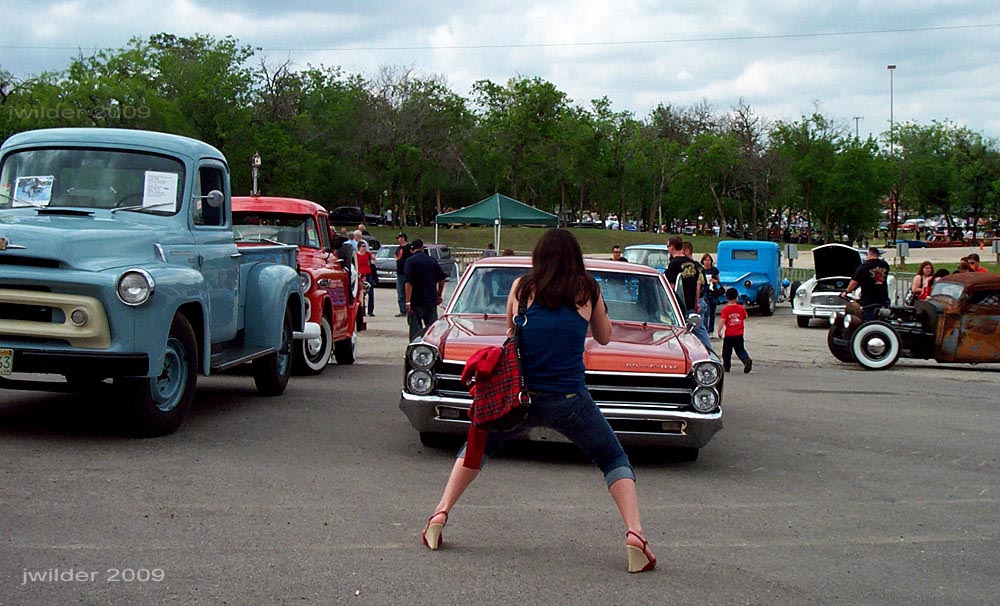
Photo by jwilder, 2009. Kodak DC280 Digital Camera.
Introduction
Most people don't even think when they take a photo. They just see an object and snap a photo or two. They have accomplished their goal, to capture the activities of the moment.
But you, my friend, desire more than just capturing the activities of the moment. You want to create an image that is alive, something that can be felt in the soul, something that stirs emotion. But where do you start?
You start at the beginning. You must learn how to see.
No Experience Necessary
If you mostly take photos with your smart phone and don’t think much about the shot, then these tips will transport you, the beginner, into a new exciting world never seen before.
Just by following the simple tips, you will be excited about the photos you take. This is the beginning of developing your ability to see.
These beginner car photography tips require zero photography knowledge. They can be applied using any camera you own, including your smartphone.
I included some photos at the end of the article to illustrate some of the tips.
Let's get started!
1. Meet Your Shadow
The worst sin of all is to have your shadow in the photo, and not know it. Unless you are doing something artistic by incorporating your shadow, keep your shadow out of the photo.
If you have committed this sin, congratulations, you are now self-aware.
Being aware of your shadow is the first step toward producing amazing car photos (seriously!).
2. Reflect on This
Most car paint is very reflective, like a mirror. When you photograph a car, check to see if you're creating a car selfie. If you don't want your reflection in the car, then step back a bit more, or try a different angle.
The untrained eyes ignore reflections, they just see a car. Train your eyes to see beyond the metal of a car, and see what is actually there. What is the car reflecting? Sometimes you can take advantage of these reflections. The key is to "be aware," and look beyond the car.
3. Background Check
Many times at car shows or outdoor public events you have all sorts of clutter in the environment. There have been times where I've taken a shot that I really liked, only to find out there was orange port-a-toilet in the background, with people in line.
Check the background before you shoot. Dumpsters are not too appealing. Neither are power poles, tents, port a potties, etc. Recompose your shot to exclude ugly objects in the background.
But wait, while you're removing ugly background objects, see if there is something beautiful in the background that will enhance your photo.
Now you're getting the hang of it.
4. Don't Chop Off Parts
Awesome shot, but you cut off part of the car.
If you're taking a photo of the whole car, make sure you capture the whole car! Better yet, make sure there is a bit of space around the whole car.
5. Eye Level is BORING
Everyone sees cars at eye level. Everyone takes photos at eye level. Don’t be like everyone.
Try a high shot. Try a low shot. Lay on the ground and shoot up.
I have seen photographers carry a lightweight step ladder with them in order to get shots no one else will get. I have been laughed at for laying on the ground. One time someone thought I had a heart attack because I was laying on the ground waiting for people to get out of the way. Few people will lay in the dirt at a car show to get a unique perspective. But you will, because it will give you a shot no one else even knows exists.
6. Portraits Are For People
Some phone photographers see the whole world in portrait. Stop it!
Landscape, square, or portrait are fine, but decide which orientation is best for your shot.
7. Hoods Up, Move On
If you are wanting to improve your car photography, just skip the cars with the hoods up and their car show board or trophies in front of the car. Are you documenting the car show or trying to create art? Let others document the event with boring photos, while you create art.
However, if you really want to take a picture of the car, then ask the owner if it would be OK to take a picture with the hood closed. Most people will be happy to do it (and most people wouldn't think to ask).
8. Who Are These People?
If you're at a car show, there will be people. And these people don't care about your shot. You can stand there pointing your camera and people will walk right in front of you.
If the car has too many people around it, then keep moving to the next (and even better) opportunity. Also, you can squat down low enough to remove the background activity completely.
Sometimes your best opportunities are after the car show is over and cars start leaving. This frees up space and people aren't hanging around. This could be your best opportunity to focus on a few of the best cars that remain.
9. Beware the Dark Side
If possible, photograph the sunny side of the car.
Be careful shooting into the sun, it makes colors look hazy. Take note of where the sun is and where the shadows are. A white car in the shade becomes gray. A killer paint job looks better in full sunlight than it does in the shade. When photographing a car, it's best to keep the sun to your back.
On the flip side, there are times when shooting with the sun in front of you is exactly what you want. Shooting with the sun in front of you can create some interesting light effects. Give it a try.
Next time you get out of your car, walk around your car and note how the color of your car changes depending on where the sun is. Take a photo of the shadow side of your car, then take a photo of the sunny side of your car. Then just flip back and forth between the photos and note the differences. You might have a white car, but in reality, the color you see changes due to shadows and reflections. A white car is only white in a perfectly lit room.
10. Take a lot of Photos
Good photographers nail the shot the first time. False!
It's very hard to take the winning photo on the first shot. Slight changes in perspective can make dramatic differences.
If you're taking a photo of the front of a car, try up close, then back up and shoot a few more. Shoot low, straight on, and then high.
11. Review Your Photos
Take the time to review your photos.
Load the photos on a device with a larger screen (iPad, laptop, desktop) and analyze the photos. Some will look better than others. Also, depending on where you focused, note how much the lighting can change between photos.
Here are a few things you need to look for.
- Is the focus sharp where you expect it to be sharp? If not, why?
- Is the shot too light or too dark? If so, how can you improve future shots?
- Are there any surprises in the background that you missed when you took the photo?
Critiquing your own photos and constant practice is the only way to improve.
12. Archive Your Photos
If you are lucky, you will get to take thousands of photos over the years. Make sure you can find them in the future.
Come up with a standard for storing your photos, and stick to it.
I don't allow any program to load and store photos. Photo organizing software needs to be updated year after year. Forget that! I just use my computer's file storage and my own standard folder structure and naming convention. This way, I always know where my photos are, I can easily create backups.
My system is simple. I have a root folder called "My Photos." Below that, I have a folder for each year (2017, 2018, 2019, etc.). Within the "year" folder, I have sub-folders with a date and keyword, such as "2019-12-01 Challenger Shoot". And finally, I add a text file that contains additional keywords that I can later search for.
Whatever system you use, make sure it will last for decades, be easily searchable, and easily backed up.
Examples
I included a few photos as examples to illustrate some of the car photography tips in this article.
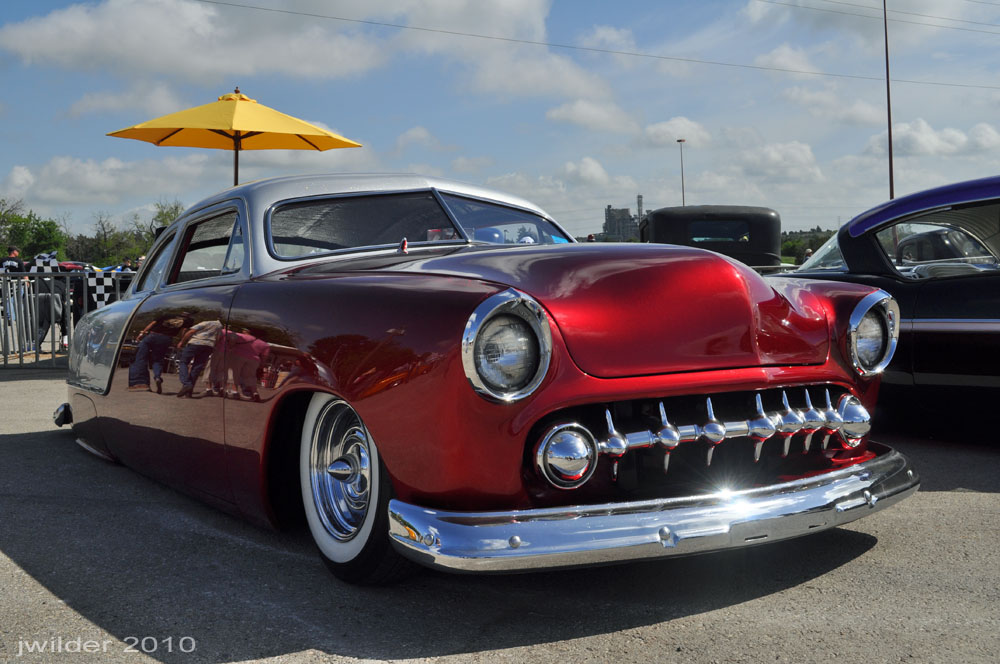
Background check! I had to laugh at this one. After reviewing my shots on my desktop I was shocked that I didn't even notice that big bright umbrella in the background. Totally ruined the shots. I could photoshop it out, but the point was I missed it. Also, that paint job screams for bright sunlight, and note the people reflections on the side of the car. This shot was a mess.
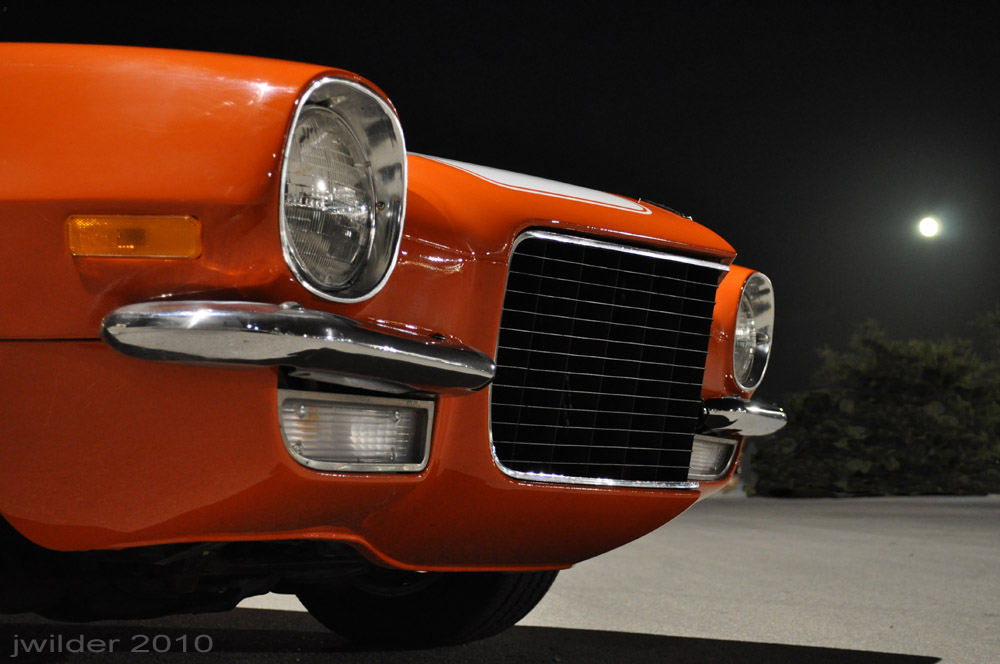
You can't get this shot standing up! I took many shots of this Camaro profile. I changed up each shot a bit because I wanted the best shot possible. Out of the ten or so shots of just this angle I only got one that I loved, and that's all you need. Eye level is boring. Get high, get low, take a lot of shots.
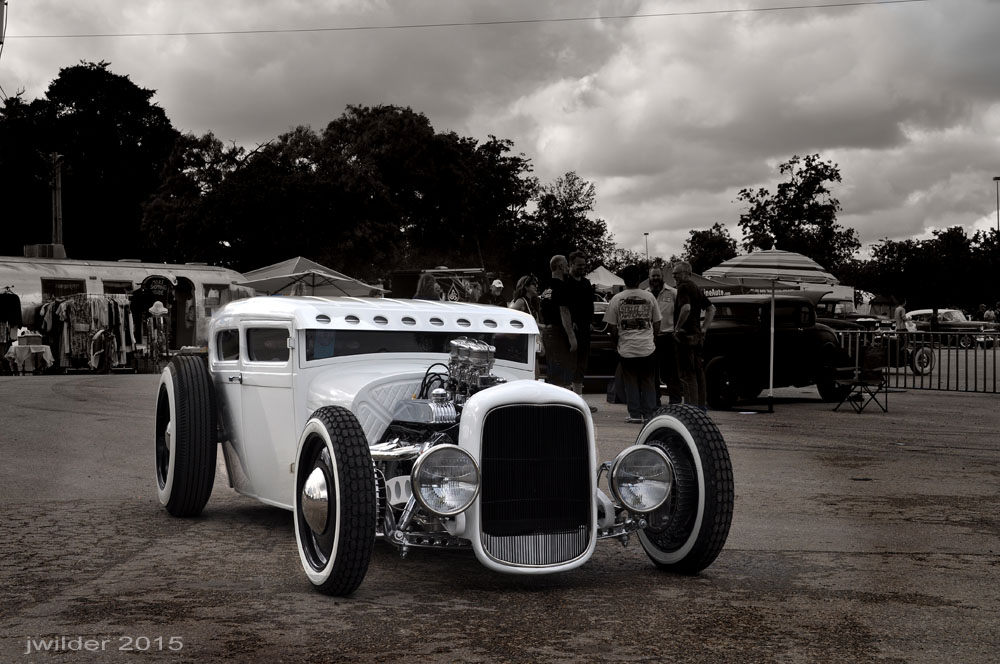
This shot was taken at the Lonestar Round Up. This car had a crowd around it all day. I still took photos, but it was pointless. However, the "stay late" tip worked and I got to take a bunch of photos with no one standing around it.
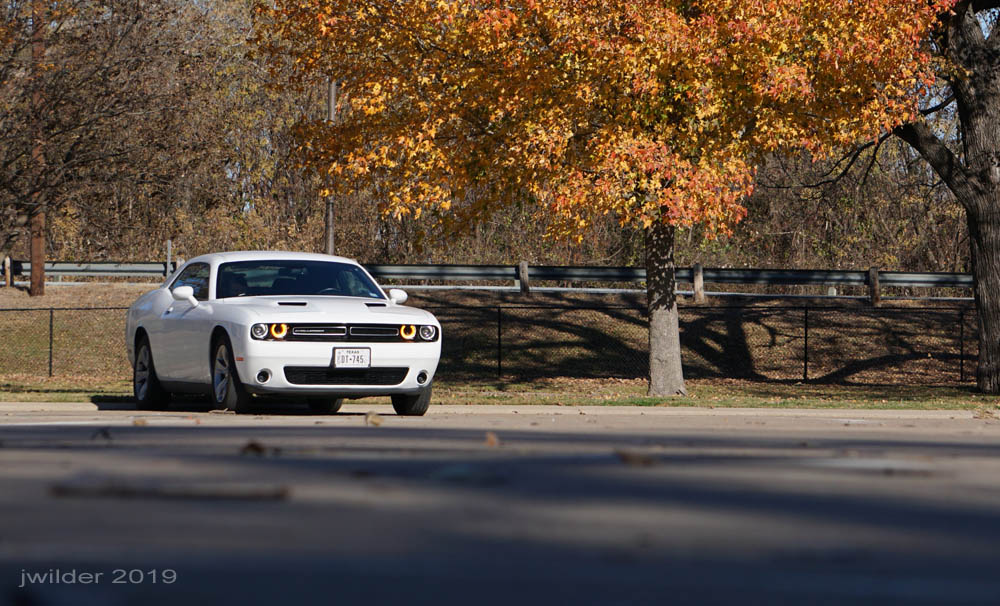
This shot was taken from quite a distance. The telephoto lens shortens the car a bit and gives it an (even more) aggressive look. The blurry foreground makes the shot more interesting also.
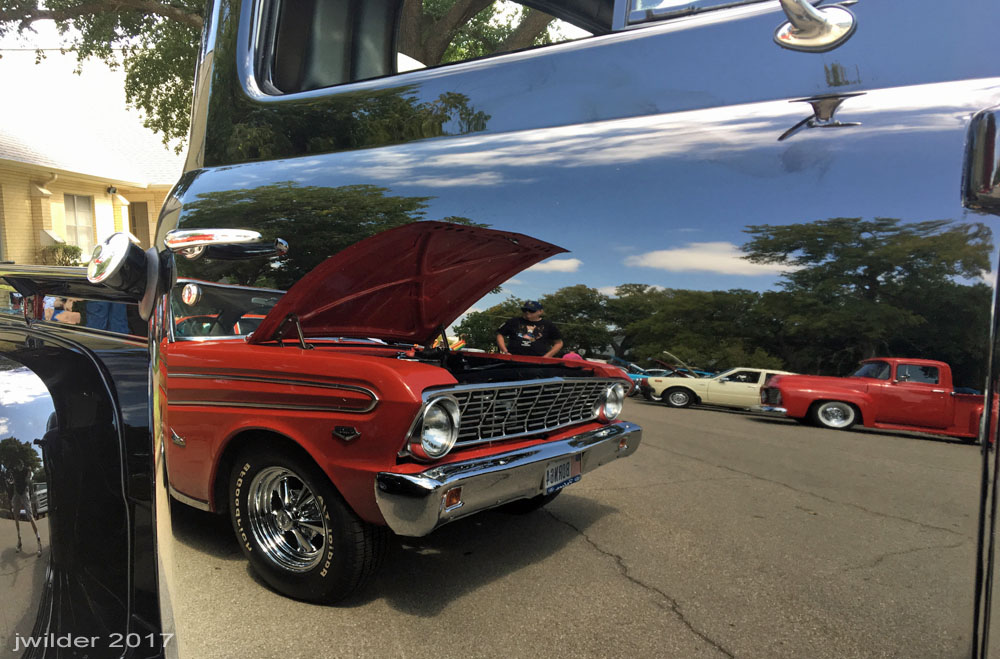
What color is this truck? In this case, reflections make a fun shot.
Conclusion
Congratulations! If any of these tips are new to you, then you will be excited about how much your car photography will improve, even in the next few months (if you practice).
When I started photographing cars I didn't know about any of this stuff. I was simply taking photos without much thought. When I look back at my early photos I realize how far I have come. Car photography is a lifelong skill. If you practice constantly, year by year you will continue to get better.
Shoot high, shoot low. Shoot close, shoot far. Shoot in all different kinds of light and shade. Shoot in the dark. Shoot in the rain. Shoot in the Summer, Winter, Spring and Fall.
You're the artist. Shoot for yourself. You don't have to please anyone.
Next Steps
Now that you are aware of your shadow, reflections, background, perspective and light, you are ready to dig deeper into composition.
Check out my Car Photography eBook for more car photography tips and learn how to make your car photography stand out (and outstanding!).
Keep shooting.